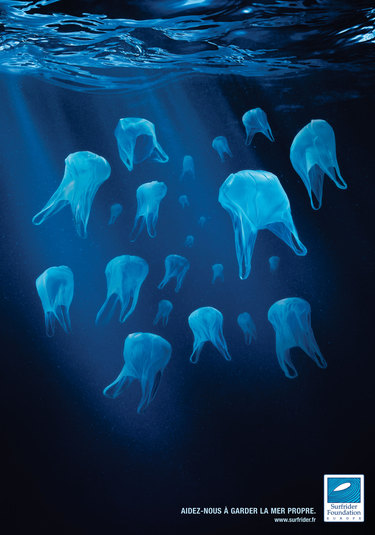[...] Thompson’s team realized that slow mechanical action—waves and tides that grind against shorelines, turning rocks into beaches—were now doing the same to plastics. The largest, most conspicuous items bobbing in the surf were slowly getting smaller. At the same time, there was no sign that any of the plastic was biodegrading, even when reduced to tiny fragments.
“We imagined it was being ground down smaller and smaller, into a kind of powder. And we realized that smaller and smaller could lead to bigger and bigger problems.”
He knew the terrible tales of sea otters choking on poly-ethylene rings from beer six-packs; of swans and gulls strangled by nylon nets and fishing lines; of a green sea turtle in Hawai’i dead with a pocket comb, a foot of nylon rope, and a toy truck wheel lodged in its gut. His personal worst was a study on fulmar carcasses washed ashore on North Sea coastlines. Ninety-five percent had plastic in their stomachs—an average of forty-four pieces per bird. A proportional amount in a human being would weigh nearly five pounds.
There was no way of knowing if the plastic had killed them, although it was a safe bet that, in many, chunks of indigestible plastic had blocked their intestines. Thompson reasoned that if larger plastic pieces were breaking down into smaller particles, smaller organisms would likely be consuming them. He devised an aquarium experiment, using bottom-feeding lugworms that live on organic sediments, barnacles that filter organic matter suspended in water, and sand fleas that eat beach detritus. In the experiment, plastic particles and fibers were provided in proportionately bite-sized quantities. Each creature promptly ingested them.
When the particles lodged in their intestines, the resulting constipation was terminal. But if the pieces were small enough, they passed through the invertebrates’ digestive tracts and emerged, seemingly harmlessly, out the other end. Did that mean that plastics were so stable that they weren’t toxic? At what point would they start to naturally break down—and when they did, would they release some fearful chemicals that would endanger organisms some time far in the future?
Richard Thompson didn’t know. Nobody did, because plastics haven’t been around long enough for us to know how long they’ll last or what will happen to them. His team had identified nine different kinds in the sea so far, varieties of acrylic, nylon, polyester, polyethylene, polypropylene, and polyvinyl chloride. All he knew was that soon everything alive would be eating them.
“When they get as small as powder, even zooplankton will swallow them.”
TWO SOURCES OF TINY PLASTIC PARTICLES hadn’t before occurred to Thompson... [
continues here]

 From Polymers Are Forever, by Alan Weisman:
From Polymers Are Forever, by Alan Weisman:
No comments:
Post a Comment